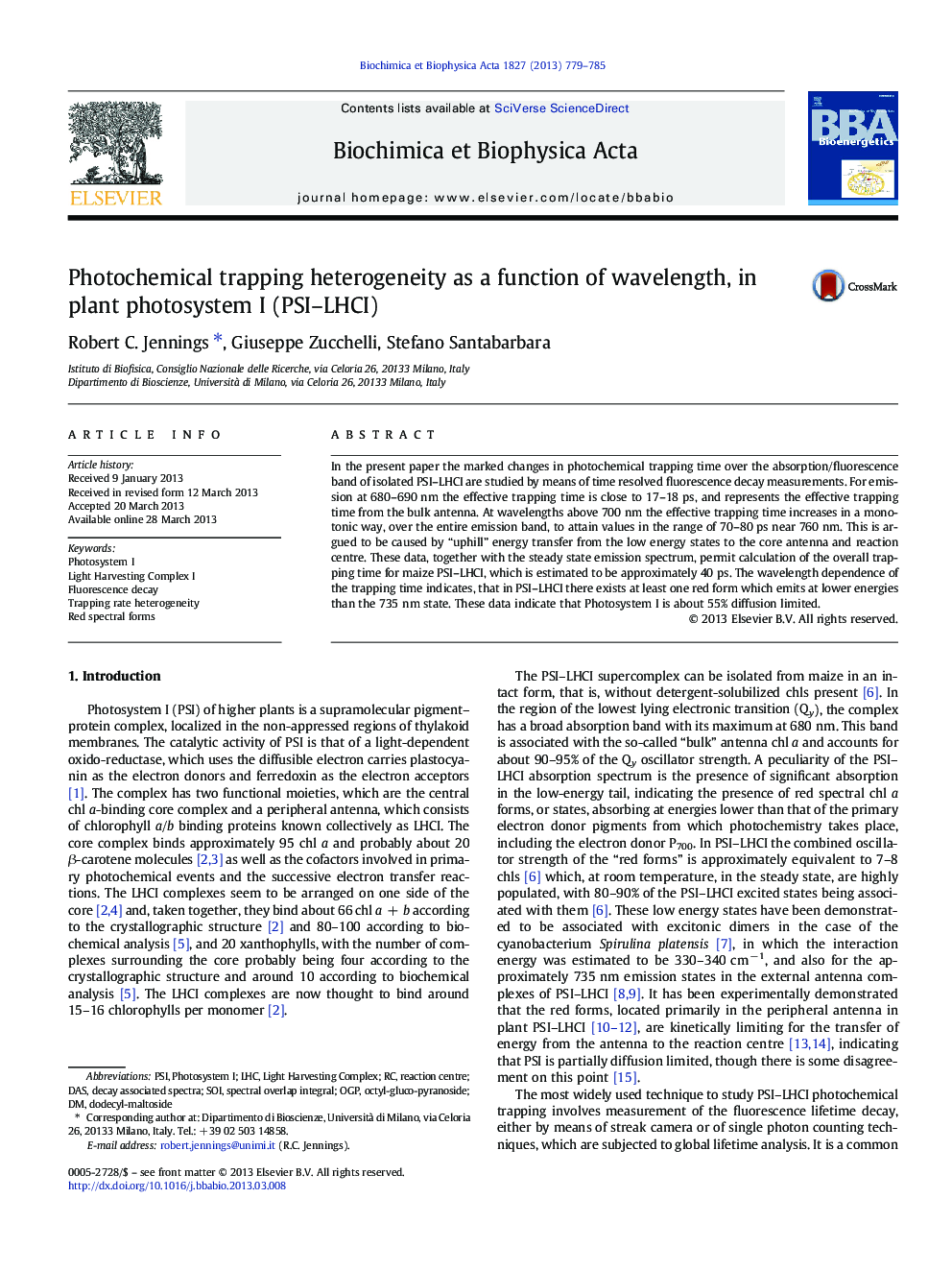| Article ID | Journal | Published Year | Pages | File Type |
|---|---|---|---|---|
| 10795794 | Biochimica et Biophysica Acta (BBA) - Bioenergetics | 2013 | 7 Pages |
Abstract
In the present paper the marked changes in photochemical trapping time over the absorption/fluorescence band of isolated PSI-LHCI are studied by means of time resolved fluorescence decay measurements. For emission at 680-690Â nm the effective trapping time is close to 17-18Â ps, and represents the effective trapping time from the bulk antenna. At wavelengths above 700Â nm the effective trapping time increases in a monotonic way, over the entire emission band, to attain values in the range of 70-80Â ps near 760Â nm. This is argued to be caused by “uphill” energy transfer from the low energy states to the core antenna and reaction centre. These data, together with the steady state emission spectrum, permit calculation of the overall trapping time for maize PSI-LHCI, which is estimated to be approximately 40Â ps. The wavelength dependence of the trapping time indicates, that in PSI-LHCI there exists at least one red form which emits at lower energies than the 735Â nm state. These data indicate that Photosystem I is about 55% diffusion limited.
Keywords
Related Topics
Life Sciences
Agricultural and Biological Sciences
Plant Science
Authors
Robert C. Jennings, Giuseppe Zucchelli, Stefano Santabarbara,
